Monday, 17 September, 2012
LEST WE FORGET ~ SABRA AND SHATILA
Posted by Noor al Haqiqa
They came in through the roof
They closed the doors and windows
They stuffed a fistful of sand into her mouth and
nostrils, Fatima.
Their hands ripped her stomach
blood pooled
they urinated on her face.
Fatima took the statue's hand
and walked lightly between the trees and the
sleeping children.
She reached the sea
her body raised above death.
~ By Tahar Ben Jelloun
**********
Along with Dier Yassin, the slaughter of civilians at the Sabra and Shatila C amps is especially foul. Its vileness and hatred will ripple throughout history.
A number of events led to the decision of an extremist terrorist group of the Lebanese kata'ib forces and forces belonging to the Zionist Army to carry out massacres against the Palestinians. From the beginning of the Zionist invasion of Lebanon, the Zionists and their agents were working toward being able to extirpate the Palestinian presence in Lebanon. This may be seen from a number of massacres of which the world heard only little, carried out by Israeli forces and militias under their command in the Palestinian camps in south Lebanon (al-Rushaidiya, 'Ayn al-Hilu, al-Miya Miya, and others).
This massacre was thus the outcome of a long mathematical calculation. It was carried out by groups of Lebanese forces under the leadership of Ilyas Haqiba, head of the kata'ib intelligence apparatus and with the approval of the Zionist Minister of Defense, Ariel Sharon and the Commander of the Northern District, General Amir Dawri.
High-level Israeli officers had been planning for some time to enable the Lebanese forces to go into the Palestinian camps once West Beirut had been surrounded.
Two days before the massacre began ~ on the evening of September 14 ~ planning and coordination meetings were held between terrorist Sharon and his companion, Eitan. Plans were laid to have the kata'ib forces storm the camps, and at dawn, September 15, Israel stormed West Beirut and cordoned off the camps.
A high-level meeting was held on Thursday morning, September 16, 1982 in which Israel was represented by General Amir Dawri, Supreme Commander of the Northern Forces.
The job of carrying out the operation was assigned to Eli Haqiba, a major security official in the Lebanese forces. The meeting was also attended by Fadi Afram, Commander of the Lebanese Forces.
The process of storming the camps began before sunset on Thursday, September 16, and continued for approximately 36 hours.
The Israeli Army surrounded the camps, providing the murderers with all the support, aid and facilities necessary for them to carry out their appalling crime. They supplied them with bulldozers and with the necessary pictures and maps. In addition, they set off incandescent bombs in the air in order to turn night into day so that none of the Palestinians would be able to escape death's grip.
And those who did flee ~ women, children and the elderly ~ were brought back inside the camps by Israeli soldiers to face their destiny. At noon on Friday, the second day of the terrorist massacre, and with the approval of the Israeli Army, the kata'ib forces began receiving more ammunition, while the forces which had been in the camps were replaced by other, "fresh" forces.
On Saturday morning, September 18, 1982, the massacre had reached its peak, and thousands of Sabra and Shatila camp residents had been annihilated.
Information about the massacre began to leak out after a number of children and women fled to the Gaza Hospital in the Shatila camp, where they told doctors what was happening. News of the massacre also began to reach some foreign journalists on Friday morning, September 17.
One of the journalists who went into the camps after the massacre reports what he saw, saying,
"The corpses of the Palestinians had been thrown among the rubble that remained of the Shatila camp. It was impossible to know exactly how many victims there were, but there had to be more than 1,000 dead. Some of the men who had been executed had been lined up in front of a wall, and bulldozers had been used in an attempt to bury the bodies and cover up the aftermath of the massacre. But the hands and feet of the victims protruded from the debris."
Hasan Salama (57 years old), whose 80-year-old brother was killed in the massacre, says,
"They came from the mountains in thirty huge trucks. At first they started killing people with knives so that they wouldn't make any noise. Then on Friday there were snipers in the Shatila camp killing anybody who crossed the street. On Friday afternoon, armed men began going into the houses and firing on men, women and children. Then they started blowing up the houses and turning them into piles of rubble."
Author Amnoun Kabliyouk [p. 10] writes in his book about the tragedy of a young Palestinian girl who, like the rest of the children in the camp, faced this horrific massacre. Thirteen years old, she was the only survivor out of her entire family (her father, her mother, her grandfather and all her brothers and sisters were killed). She related to a Lebanese officer, saying,
"We stayed in the shelter until really late on Thursday night, but then I decided to leave with my girl friend because we couldn't breathe anymore. Then all of a sudden we saw people raising white flags and handkerchiefs and coming toward the kata'ib saying, 'We're for peace and harmony.' And they killed them right then and there.
The women were screaming, moaning and begging [for mercy]. As for me, I ran back to our house and got into the bathtub. I saw them leading our neighbors away and shooting them. I tried to stand up at the window to look outside, but one of the kata'ib fighters saw me and shot at me. So I went back to the bathtub and stayed there for five hours. When I came out, they grabbed me and threw me down with everybody else. One of them asked me if I was Palestinian, and I said yes.
My nine-month-old nephew was beside me, and he was crying and screaming so much that one of the men got angry, so he shot him. I burst into tears and told him that this baby had been all the family I had left. That made him all the more angry, and he took the baby and tore him in two."
The massacre continued until noon on Saturday, September 18, leaving between 3,000 and 3,500 Palestinian and Lebanese civilians dead, most of them women, children and elderly people.
SABRA AND SHATILA MASSACRE
Click here: http://www.youtube.com/watch?v=-pWwkVfbY10&feature=player_embedded
Robert Fisk provides eye witness report of the slaughter of hundreds of Palestinians by Lebanese Christian militias who were under the control of the Israeli military.
Sabra & Shatila massacre of Palestinians-Eyewitness (Robert Fisk & Odd Karsten Tveit)
Click here: http://www.youtube.com/watch?feature=player_embedded&v=-XbMtJhvfZ0
REMEMBERING SABRA AND SHATILA
By Robert Fisk
Robert Fisk was one of the first journalists to be present at the scene of the horrific murders in Lebanon, September 17th, 1982. He has published a number of different books and currently writes columns for The Independent newspaper. The following is extracted from his book, "Pity the Nation."
What we found inside the Palestinian camp at ten o'clock on the morning of September 1982 did not quite beggar description, although it would have been easier to re-tell in the cold prose of a medical examination.
There had been medical examinations before in Lebanon, but rarely on this scale and never overlooked by a regular, supposedly disciplined army. In the panic and hatred of battle, tens of thousands had been killed in this country. But these people, hundreds of them had been shot down unarmed.
This was a mass killing, an incident ~ how easily we used the word "incident" in Lebanon ~ that was also an atrocity. It went beyond even what the Israelis would have in other circumstances called a terrorist activity. It was a war crime.
Jenkins and Tveit were so overwhelmed by what we found in Shatila that at first we were unable to register our own shock. Bill Foley of AP had come with us. All he could say as he walked round was "Jesus Christ" over and over again. We might have accepted evidence of a few murders; even dozens of bodies, killed in the heat of combat.
But there were women lying in houses with their skirts torn torn up to their waists and their legs wide apart, children with their throats cut, rows of young men shot in the back after being lined up at an execution wall. There were babies ~ blackened babies because they had been slaughtered more than 24-hours earlier and their small bodies were already in a state of decomposition ~ tossed into rubbish heaps alongside discarded US army ration tins, Israeli army equipment and empty bottles of whiskey.
Where were the murderers?
Or to use the Israelis' vocabulary, where were the "terrorists"? When we drove down to Shatila, we had seen the Israelis on the top of the apartments in the Avenue Camille Chamoun but they made no attempt to stop us. In fact, we had first been driven to the Bourj al-Barajneh camp because someone told us that there was a massacre there. All we saw was a Lebanese soldier chasing a car thief down a street.
It was only when we were driving back past the entrance to Shatila that Jenkins decided to stop the car. "I don't like this", he said. "Where is everyone? What the f**k is that smell?"
Just inside the southern entrance to the camp, there used to be a number of single-story, concrete walled houses. I had conducted many interviews in these hovels in the late 1970's. When we walked across the muddy entrance to Shatila, we found that these buildings had been dynamited to the ground. There were cartridge cases across the main road. I saw several Israeli flare canisters, still attached to their tiny parachutes. Clouds of flies moved across the rubble, raiding parties with a nose for victory.
Down a laneway to our right, no more than 50 yards from the entrance, there lay a pile of corpses. There were more than a dozen of them~ young men whose arms and legs had been wrapped around each other in the agony of death. All had been shot point-blank range through the cheek, the bullet tearing away a line of flesh up to the ear and entering the brain. Some had vivid crimson or black scars down the left side of their throats.
One had been castrated, his trousers torn open and a settlement of flies throbbing over his torn intestines.
The eyes of these young men were all open. The youngest was only 12 or 13 years old. They were dressed in jeans and coloured shirts, the material absurdly tight over their flesh now that their bodies had begun to bloat in the heat. They had not been robbed. On one blackened wrist a Swiss watch recorded the correct time, the second hand still ticking round uselessly, expending the last energies of its dead owner.
On the other side of the main road, up a track through the debris, we found the bodies of five women and several children. The women were middle-aged and their corpses lay draped over a pile of rubble. One lay on her back, her dress torn open and the head of a little girl emerging from behind her. The girl had short dark curly hair, her eyes were staring at us and there was a frown on her face. She was dead.
Another child lay on the roadway like a discarded doll, her white dress stained with mud and dust. She could have been no more than three years old. The back of her head had been blown away by a bullet fired into her brain. One of the women also held a tiny baby to her body. The bullet that had passed into her breast had killed the baby too.
Someone had slit open the woman's stomach, cutting sideways and then upwards, perhaps trying to kill her unborn child. Her eyes were wide open, her dark face frozen in horror.
As we stood there, we heard a shout in Arabic from across the ruins.
"They are coming back," a man was screaming,
So we ran in fear towards the road. I think, in retrospect, that it was probably anger that stopped us from leaving, for we now waited near the entrance to the camp to glimpse the faces of the men who were responsible for all of this.
They must have been sent in here with Israeli permission.
They must have been armed by the Israelis. Their handiwork had clearly been watched ~ closely observed ~ by the Israelis who were still watching us through their field-glasses.
When does a killing become an outrage?
When does an atrocity become a massacre?
Or, put another way, how many killings make a massacre?
Thirty? A hundred? Three hundred?
When is a massacre not a massacre?
When the figures are too low?
Or when the massacre is carried out by Israel's friends rather than Israel's enemies?
That, I suspected, was what this argument was about.
If Syrian troops had crossed into Israel, surrounded a Kibbutz and allowed their Palestinian allies to slaughter the Jewish inhabitants, no Western news agency would waste its time afterwards arguing about whether or not it should be called a massacre.
But in Beirut, the victims were Palestinians. The guilty were certainly Christian militiamen ~ from which particular unit we were still unsure ~ but the Israelis were also guilty.
If the Israelis had not taken part in the killings, they had certainly sent militia into the camp. They had trained them, given them uniforms, handed them US army rations and Israeli medical equipment. Then they had watched the murderers in the camps, they had given them military assistance ~ the Israeli air force had dropped all those flares to help the men who were murdering the inhabitants of Sabra and Shatila ~ and they had established military liaison with the murderers in the camps.
.
THE CRIMINALS RESPONSIBLE




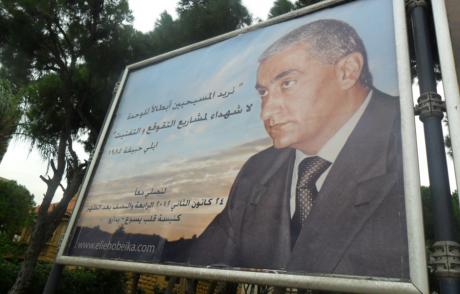
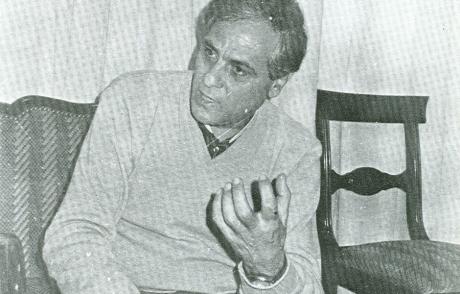






















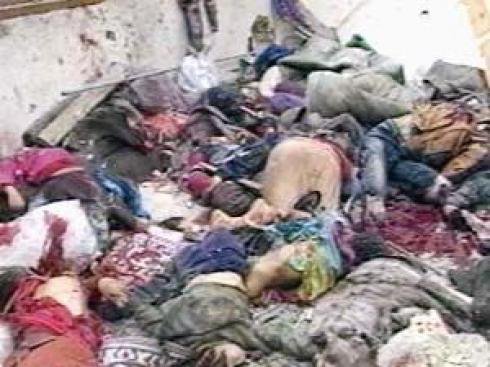


























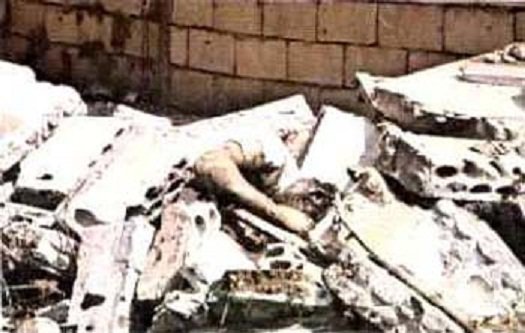



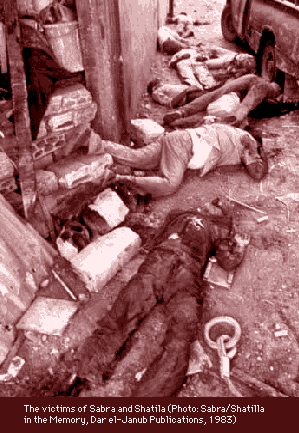






No comments:
Post a Comment